Maritime transport: an economic pillar that needs transformation
Maritime transport is a key player in international trade. If the merchant navy were considered a country, it would be the sixth-largest CO2 emitter in the world.
To meet the climate goals set by the Paris Agreement and strategies from the IMO (International Maritime Organization), decarbonizing the maritime sector is no longer an option, but a priority.
IMO Targets for 2050
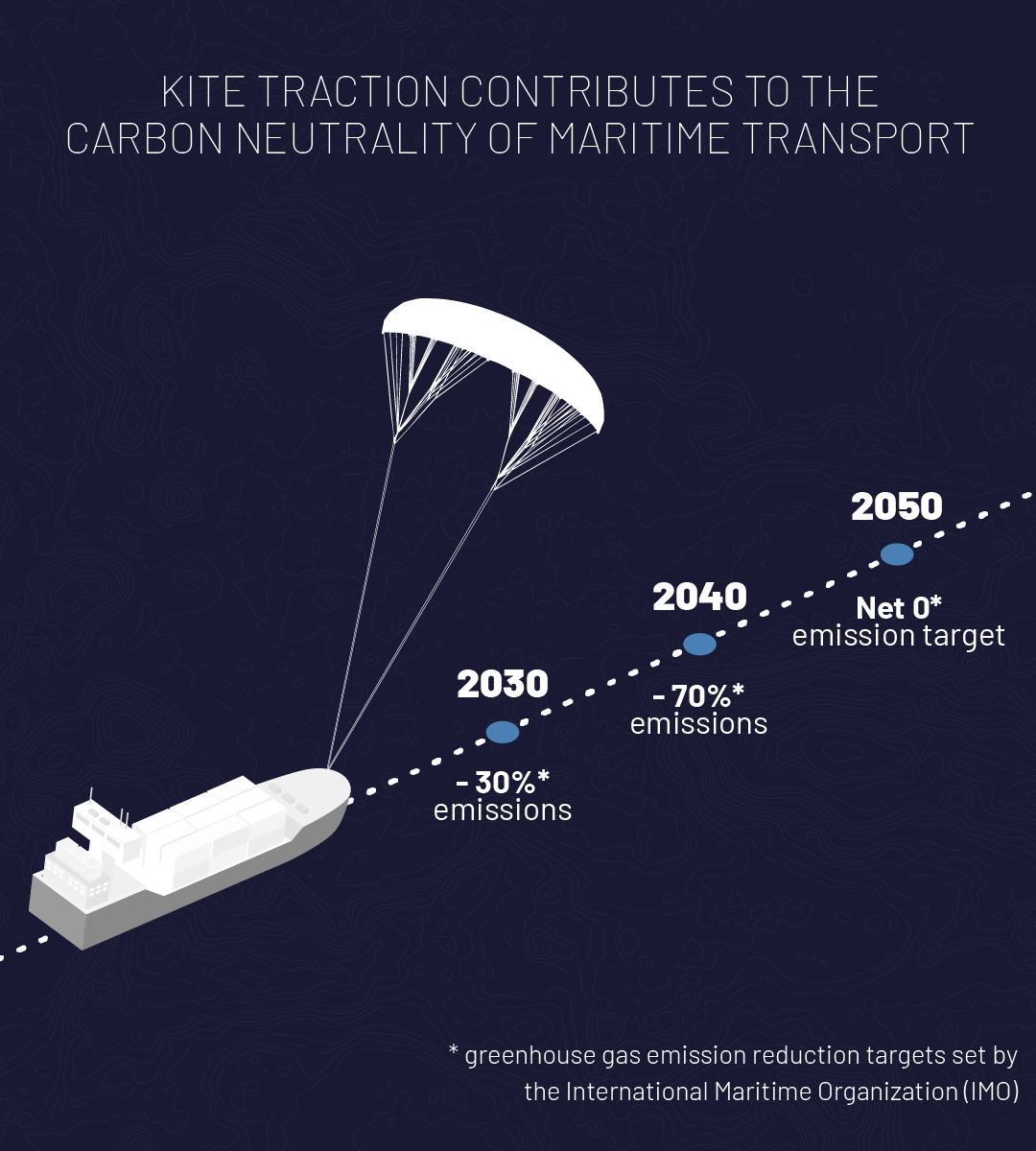
In response to the climate emergency, the International Maritime Organization (IMO) has set an ambitious roadmap for the global maritime sector. It includes a 20% reduction in greenhouse gas emissions by 2030, 70% by 2040, with the ultimate goal of reaching carbon neutrality by 2050.
These targets are not just intentions: they must gradually become benchmark standards for all stakeholders in maritime transport, both public and private.
Kite traction: a concrete technology for maritime decarbonization
Beyond the Sea positions itself as a driving force in this transition. By offering a mature, adaptable, and immediately available kite traction technology, we provide shipowners and charterers with a practical solution to begin decarbonizing their fleets without delay. Our systems can significantly reduce emissions starting today, without waiting for future revolutions or implementing complex structural changes.
Thanks to this technology:
- Vessels can reduce fuel consumption by up to 40%, depending on wind and navigation conditions.
- CO₂ emissions are significantly reduced, contributing to international climate targets.
- The solution is immediately installable on existing ships, with no need for major overhauls or lengthy technical downtime.
This technology is based on three essential advantages:
Clean
It relies exclusively on wind energy — a renewable, free, and non-polluting resource.
Robust
Designed to withstand the harshest maritime environments, it remains reliable even in complex sailing conditions.
Adaptable
Its modular architecture allows easy integration across a wide variety of vessels — cargo ships, tugboats, frigates, fishing boats, support vessels, etc.
Kite traction is an immediately operational solution with a short return on investment, averaging 2 to 3 years (depending on the vessel and usage conditions).
SeaKite®: The solution dedicated to commercial maritime transport
Among its various innovations, Beyond the Sea has developed SeaKite®, a solution specifically designed for large commercial vessels.
Results: a direct reduction in fuel consumption, immediate operational savings, and a measurable decrease in carbon footprint (on average, 20 to 30%).
The SeaKite® system includes:
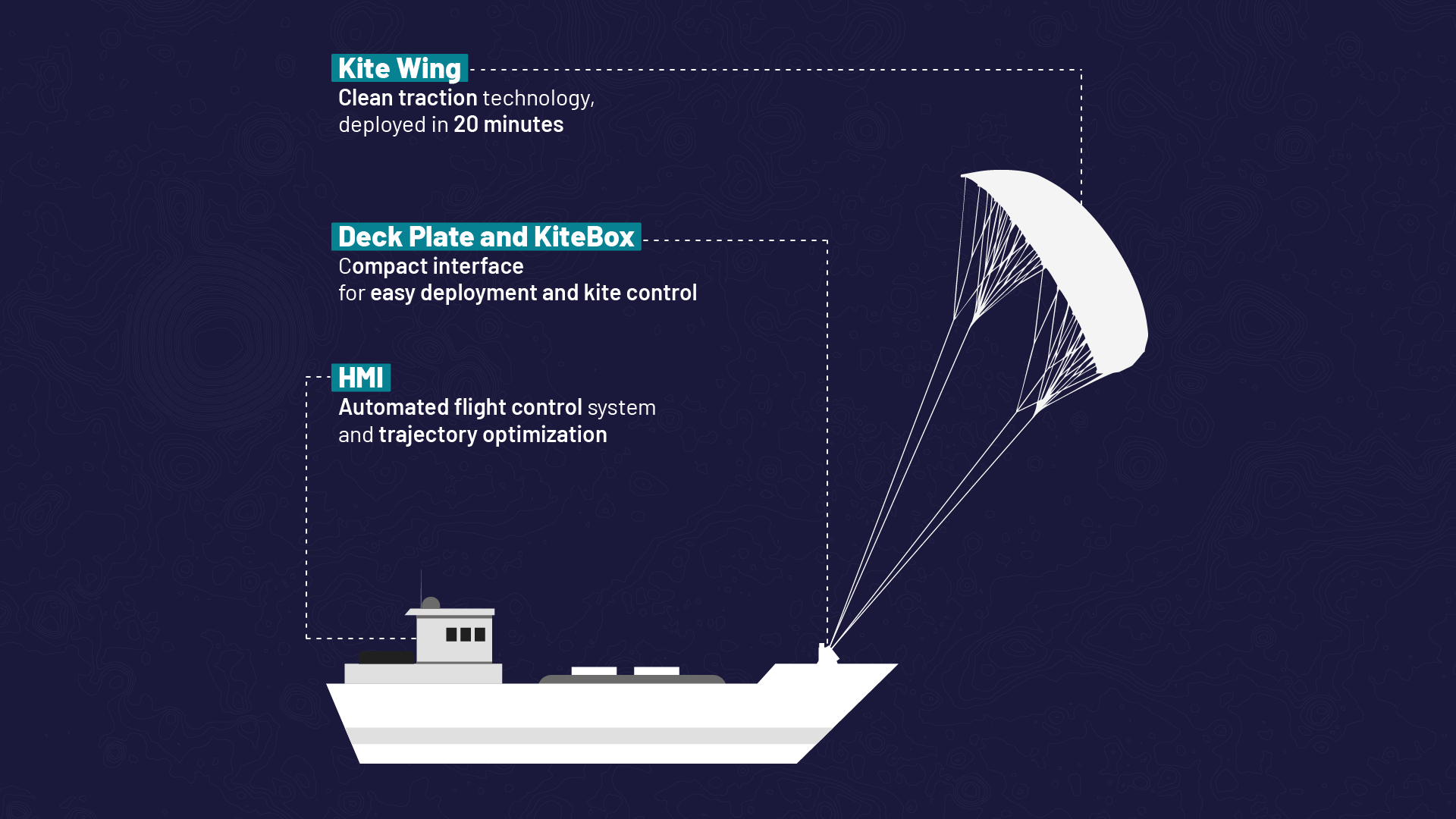
The Platform and KiteBox
(hardware)
A mechatronic module installed onboard, enabling the automated deployment, control, and retrieval of the kite. Compact and durable, it can be easily integrated onto various deck configurations.
The HMI
(software)
An intelligent routing system that optimizes the vessel’s course based on wind conditions. It enables assisted navigation, accessible to any crew, with measurable energy gains.
The Kite
(propulsion)
A large-scale, fully automated wing that harnesses wind energy to partially replace engine propulsion, thereby reducing fuel consumption and associated emissions.
The wind becomes a driver of performance once again
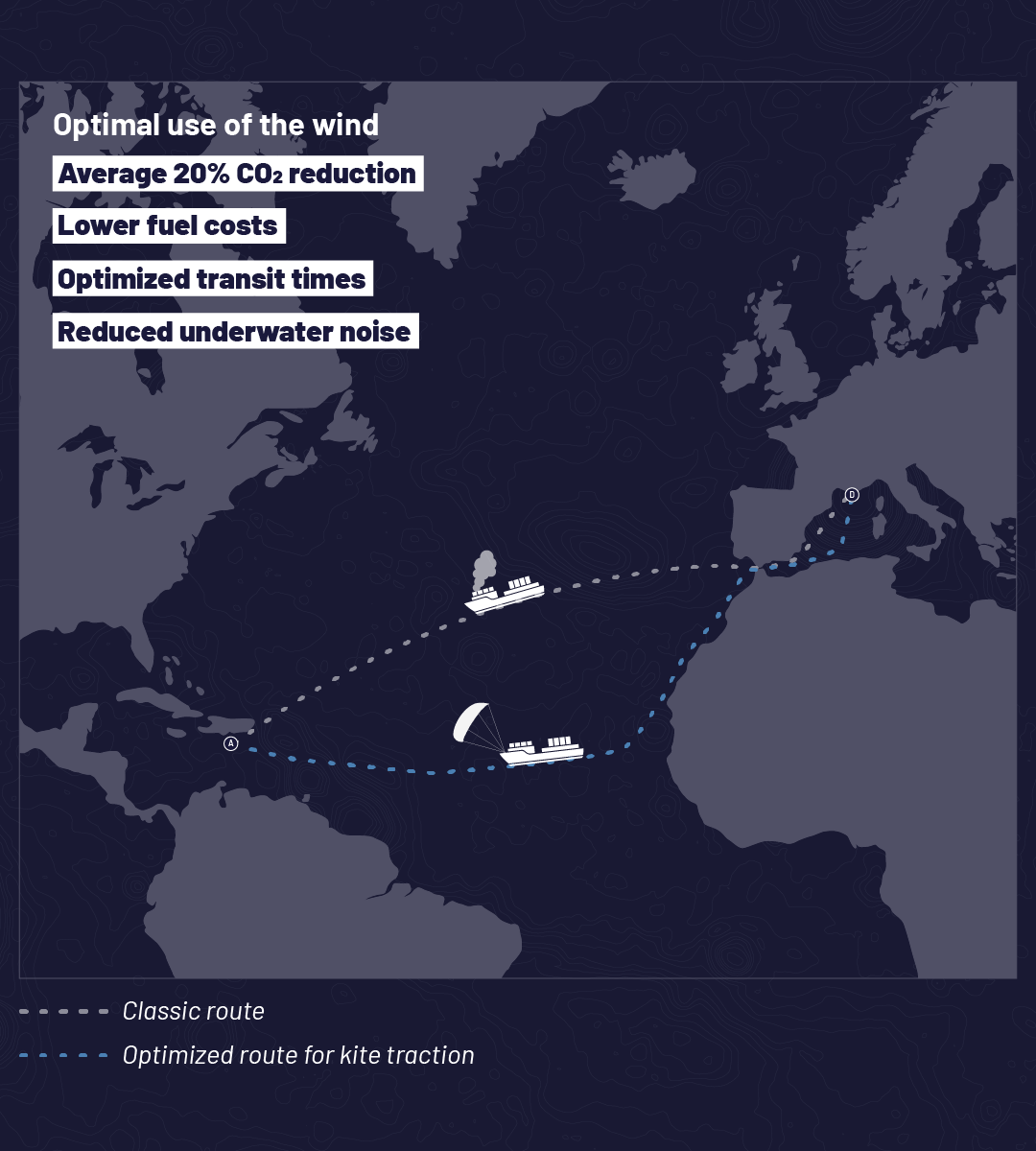
Thanks to wind and kite traction, equipped vessels can reduce their
CO₂ emissions by an average of 20%,
while optimizing their routes with an intelligent routing system.
This optimization not only helps
minimize environmental impact, but also
significantly lowers fuel costs.
Curious about SeaKite®? Let’s connect
Our team of experts is here to answer any questions you may have about the SeaKite® traction system and its integration into your fleet.
Simply fill out the form below and we’ll get back to you as soon as possible.


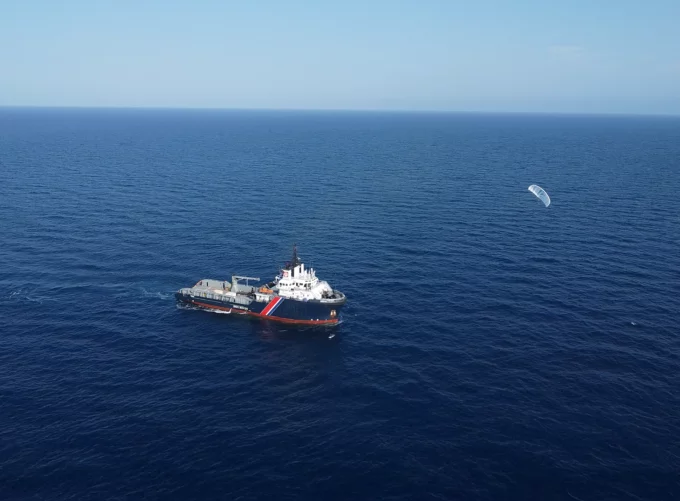

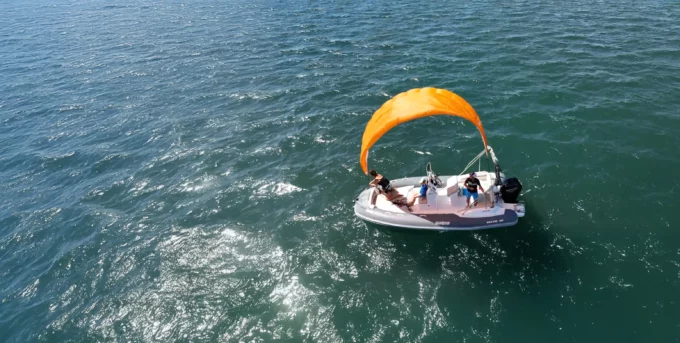
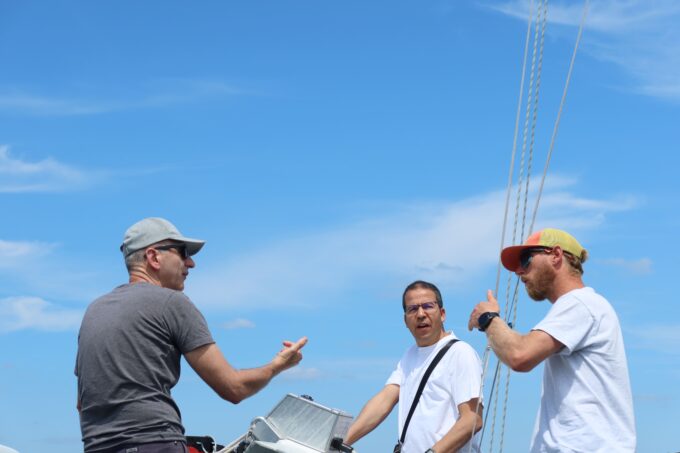
A proven solution, already tested and validated by key maritime players
The Beyond the Sea technology is already in operation on several vessels, thanks to strong industry partnerships:
Les Abeilles / French Navy
A strategic collaboration to validate the operational use of kite technology on state support vessels.
Huemul / Ultranav
The first sea trials with the 100 m² kite are currently underway.
Cap Kersaint / Cap Bourbon
Cap Bourbon, a subsidiary of the Le Garrec Group, will equip the longline fishing vessel Cap Kersaint, based in La Réunion, with a 100 m² SeaKite® system by the end of 2025. Installation has been underway since mid-November.
Le Forbin / Geogas
The first trials will take place very soon, marking an important milestone in the progress of the project.